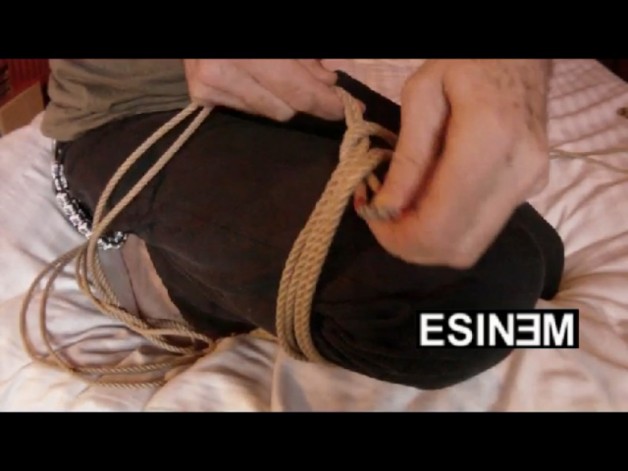Like many others, I have been constantly frustrated by the instability of the standard shibari knot, often called a ‘boola boola’, used to close things like single and double column ties. In my experience, it has been something of a hit or miss affair whether this knot locks or collapses into two half hitches. In the worst case, it collapses then opens or slips and tightens. In fact for important usage, for example, the wrist tie of the takate-kote, I have always added a second knot to make sure it doesn’t come undone at the wrong moment. Here are examples of this problem posted on YouTube by Slaanesh and GanRaptor, there’s one test comparing several types of knot, inlcuding this one, with cotton rope and another with jute.
I’ve been playing with the Somerville bowline but have been unable to find a sufficiently fast and slick way to tie it. It feels unnatural and awkward to me. Even after WykD_Dave demonstrated his method of tying the standard knot to Nina and I, we were able to discern the difference from the method we have always used which involves creating a reef knot, i.e. two interlocking U-shapes. After hours of discussion and experimentation, we finally discovered the secret. It is so simple, you will kick yourself! As you’ll see in the video, it supports my weight without budging.
(To read more, join as a free or paid member…)
[private]
The trick is to ensure the longer/working end of the rope forms a twist around the bight and that this is not pulled out when you close the knot. After the initial tightening, you should push the knot down it to fully close it. Although the result looks similar, this has the effect of creating an excellent friction if you do it properly. In the video, you can see this all important twist around the bight. This can be maintained by first pulling on the bight, then running your hand down the longer length to lock the knot. Visually the difference is minimal, but the result is immensely stable.

